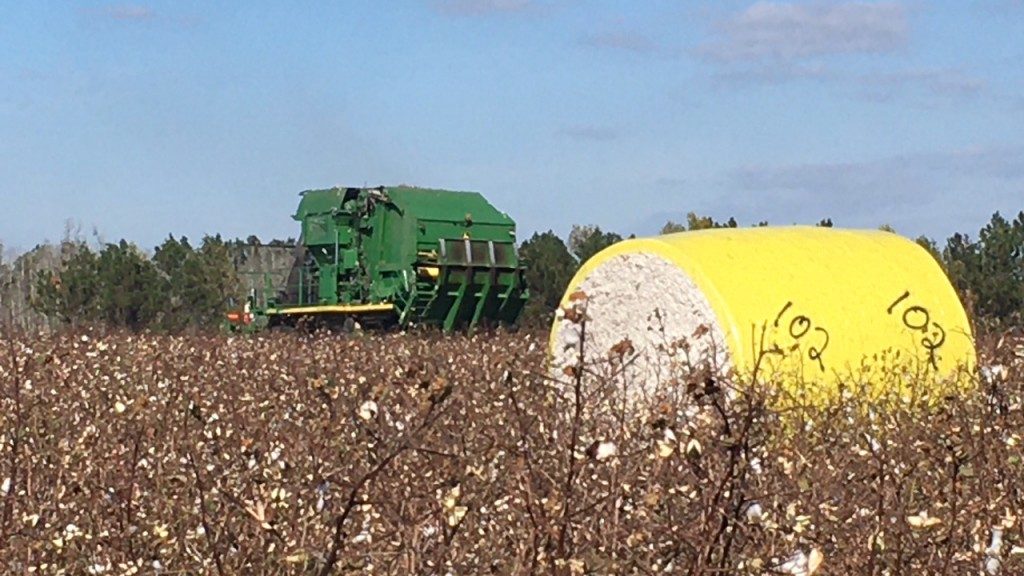It does not take long before it gets dry! The last measurable rainfall from the UGA Weather Station at the Sunbelt Ag Expo was 0.36 which occurred on August 23, 2025. Since August 23rd, 0.12 inches of rain have occurred at this site. The graph below shows the 15-day percent of normal precipitation for the area.

The drought monitor this week shows that 49.13% of Colquitt County is suffering from abnormally dry conditions. Rain chances are very low in the near future. This is going to make dryland peanut digging a challenge due to soil conditions and maturity of the crop.

How much do I irrigate my peanuts? Growers do not need to get behind on irrigating peanuts. The water requirements do decrease close to harvest and the average et value this past week was 0.17 inches per day according to the UGA Weather Station at the Expo. According to Dr. Porter, unlike with cotton and corn there is no physiological irrigation termination trigger for peanut. As the crop is reaching toward the end of the year the water requirements decrease per the irrigation schedule below. The biggest concern with end of season peanut irrigation is digging, too much moisture will cause excessive soil on the shell, too little moisture will make digging difficult.

Peanut Maturity: There have been many peanut samples coming into the office over the past couple of weeks. Most of the samples that have been coming in have been Georgia O6G (42%), Tifnv (18.5%), and Georgia 12Y (18.5%) which is shown in the chart below.

Table 1 shows the average age in days to maturity of dryland and irrigated samples from fields planted in April and May for Georgia 06G, TifNV, and Georgia 12Y in Colquitt County Extension maturity checks.
Table 1. Average Age in Days to Maturity for Dryland and Irrigated Peanut Samples planted in April and May for Georgia 06G, TifNV, and Georgia 12Y in Colquitt County Extension maturity checks.

What about sample size for the maturity board? Taking a good sample is CRUCIAL in determining the proper time to dig, so here is a reminder of how to pull a sample for profiling peanut maturity. A peanut hull scrape maturity check will be as accurate as the sample that you take. Pull or dig up at least 5 to 6 adjacent plants from at least three representative parts of a field which can be dug in one day. Keep these samples from each area of the field separate. Pick ALL the peanuts off the plants until you get around 200 peanuts (a sample should contain between 180 and 220 peanut pods). Pick the vine clean. If it will be a while before you can bring the sample then pick off the sample and keep the peanuts in a bucket of water to keep them fresh.
Do you have information from the Farm Bill meeting last week? I am glad you asked it is available below.
Dr. Don Shurley’s latest update on the cotton market situation.
Have a safe week and if you have questions please call the office,
Jeremy M. Kichler
Colquitt County Extension Coordinator
The University of Georgia Cooperative Extension does not endorse or guarantee the performance of any products mentioned in this update.
